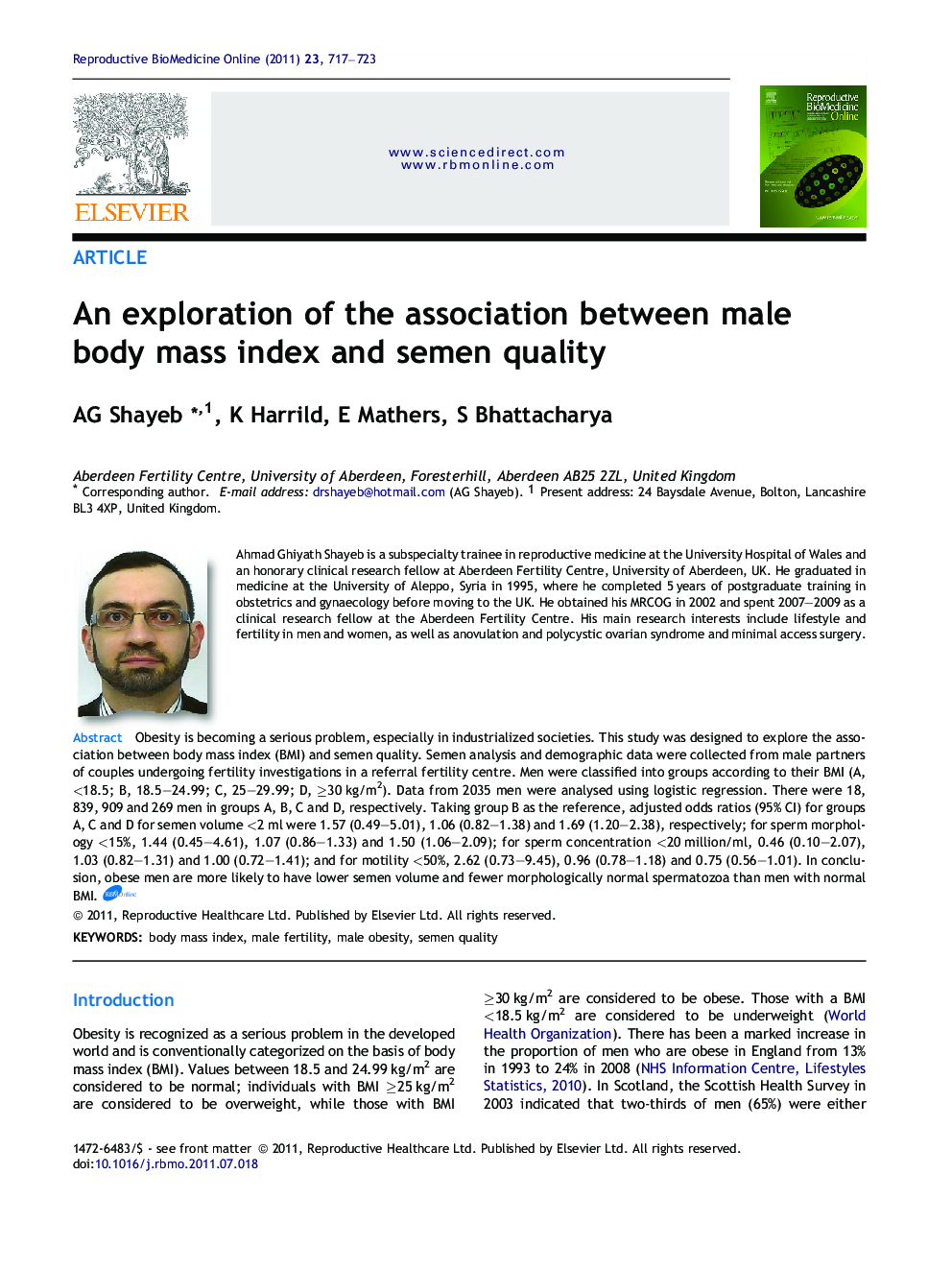| کد مقاله | کد نشریه | سال انتشار | مقاله انگلیسی | نسخه تمام متن |
|---|---|---|---|---|
| 3971227 | 1256756 | 2011 | 7 صفحه PDF | دانلود رایگان |

Obesity is becoming a serious problem, especially in industrialized societies. This study was designed to explore the association between body mass index (BMI) and semen quality. Semen analysis and demographic data were collected from male partners of couples undergoing fertility investigations in a referral fertility centre. Men were classified into groups according to their BMI (A, <18.5; B, 18.5–24.99; C, 25–29.99; D, ⩾30 kg/m2). Data from 2035 men were analysed using logistic regression. There were 18, 839, 909 and 269 men in groups A, B, C and D, respectively. Taking group B as the reference, adjusted odds ratios (95% CI) for groups A, C and D for semen volume <2 ml were 1.57 (0.49–5.01), 1.06 (0.82–1.38) and 1.69 (1.20–2.38), respectively; for sperm morphology <15%, 1.44 (0.45–4.61), 1.07 (0.86–1.33) and 1.50 (1.06–2.09); for sperm concentration <20 million/ml, 0.46 (0.10–2.07), 1.03 (0.82–1.31) and 1.00 (0.72–1.41); and for motility <50%, 2.62 (0.73–9.45), 0.96 (0.78–1.18) and 0.75 (0.56–1.01). In conclusion, obese men are more likely to have lower semen volume and fewer morphologically normal spermatozoa than men with normal BMI.Obesity is becoming a serious problem, especially in industrialized societies. We designed this study to explore the association between body weight in proportion to height, in men, as expressed by the body mass index (BMI) and semen quality. Semen analysis and demographic data were collected from male partners of couples undergoing fertility investigations in a referral fertility centre. Men were classified into groups according to their BMI: A, <18.5, underweight; B, 18.5–24.99, normal weight; C, 25–29.99, overweight; and D, 330 kg/m2, obese. Data from 2,035 men were analysed. There were 18, 839, 909 and 269 men in groups A, B, C and D, respectively. Compared with men from group B, normal weight, and taking into account other factors besides BMI that may affect semen quality in the analysis, the adjusted odds ratios (95% CI) for groups A, C and D to have a semen volume <2 ml were 1.57 (0.49–5.01), 1.06 (0.82–1.38) and 1.69 (1.20–2.38), respectively, for sperm morphology <15%, 1.44 (0.45–4.61), 1.07 (0.86–1.33) and 1.50 (1.06–2.09), for sperm concentration <20 million /ml, 0.46 (0.10–2.07), 1.03 (0.82–1.31) and 1.00 (0.72–1.41) and for motility <50%, 2.62 (0.73–9.45), 0.96 (0.78–1.18) and 0.75 (0.56–1.01). In conclusion, obese men are more likely to have lower semen volume and fewer morphologically normal spermatozoa than men with normal BMI.
Journal: Reproductive BioMedicine Online - Volume 23, Issue 6, December 2011, Pages 717–723